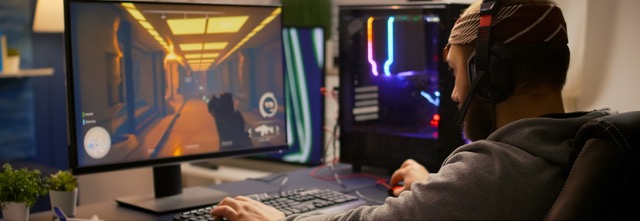NFT Use-Cases
NFTs can also be used for gaming, culture building, real estate, and marketing
As of writing, NFTs have mostly been used to represent digital artworks and illustrations. However, innovators continue exploring other use cases, which constantly reshape and redefine what an NFT is. With that being said, let’s take a quick look at what these different use cases are.

Gaming
NFTs are heavily used in the gaming industry, particularly with the Play-to-Earn model, which lets players earn rewards with real-world value by completing tasks, battling other players, and progressing through levels. Here, NFTs represent in-game assets such as accessories, monsters, or even tools. NFTs enable true ownership of assets and objects, giving them additional value above the normal skins you see in CS:GO or Fortnite.
Additionally, since NFTs are based on the blockchain, in-game assets represented as NFTs possess the ability to be used outside of the original game’s ecosystem. Imagine using an in-game weapon in one game and then using it for another purpose in another game!
People have also started exploring building metaverses around these NFTs, such as Decentraland ($MANA) and The Sandbox ($SAND). Perhaps, the most significant movement in NFT games here in the Philippines happened with Axie Infinity, where players compete against each other and earn cryptocurrencies in return.

Culture (Art and Music)
NFTs allow for true ownership of cultural products such as art and music. By turning art and music into NFTs, artists can sell directly to their fans and skip past any resistance that might hinder them, such as storage costs, shipping costs, and logistics, among many others. With NFTs, artists can now truly own and monetize their work.
One example is the release of a special edition Kings of Leon album on YellowHeart – an NFT marketplace focused on connecting musicians and their fans.
In March of 2021, Kings of Leon boldly decided to release the first-ever NFT album in the music industry’s history. They released the album, ‘When You See Yourself’ on other platforms like Spotify, iTunes, Apple Music, and Amazon, but the YellowHeart NFT version is the only one that includes enhanced media – a moving album cover, a digital download of the tracks produced, and limited-edition vinyl.

Real estate
Given an NFT’s ability to represent ownership of an asset, NFTs can be used to represent real estate such as land, condominiums, and houses. Using NFTs to prove ownership in place of traditional certificates dramatically reduces the risk of counterfeiting and fraud while making it easier for owners to sell, validate, and secure their properties.
Another relevant application is the fractionalization of NFTs. For example, an NFT can be used to represent a farm in Batangas. This NFT can be represented by smaller NFTs, each representing small land ownership. This opens the door to many possibilities, including making land ownership more accessible and revenue sharing among owners.

Marketing
In the marketing field, people have been exploring how NFTs can help increase brand awareness, community engagement, or customer loyalty for their brands. Over the past few years, different companies have found creative ways to market their brand with NFTs.
One example is how Budweiser released NFTs, which gave access to holders to a private event with free-flowing beer, live performances, tours, and exciting giveaways. This example shows how marketers can use NFTs to provide exclusive incentives and help build a community.


Powered by Bitskwela
Got more questions about Crypto and NFTs?
Check out our GCrypto Learning Hub to learn more!




